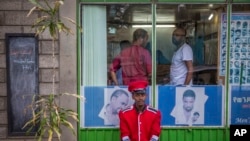
By Aaron Maasho
ADDIS ABABA (Reuters) - Ethiopia has arrested its state minister for finance on suspicion of corruption, state-run television said on Friday, part of an anti-graft drive that the government says has led to dozens of arrests in the last two weeks.
Alemayehu Gujo is the highest-ranking official to have been detained so far in the sweep that has also involved business owners. Zayed Woldegabriel, Director General of the Ethiopian Roads Authority, was also detained on Friday, the state-run Ethiopian Broadcasting Corporation (EBC) said.
In an emergency session, Ethiopia's House of People's Representatives lifted Gujo's immunity from prosecution, the EBC said in a breaking news announcement.
"A warrant was then issued and led to his arrest," the broadcaster said, citing the Attorney General's Office.
Friday's arrest followed the detention of more than 40 officials from the Ministry of Finance and Economic Cooperation, the capital's housing development agency, the state-run Ethiopian Sugar Corporation, and the Ethiopian Roads Authority.
Charges brought so far include embezzlement and the siphoning off of billions of birr.
The anti-corruption drive is partly a response to unrest that wrecked the Horn of Africa country in 2015 and 2016 and which was sparked by a scheme to development and expand the capital, Addis Ababa. The protests turned into broader anti-government demonstrations over politics and human rights abuses.
The violence included attacks on businesses, many of them foreign-owned, including farms growing flowers for export.
The government subsequently acknowledged that maladministration and abuse of power was rife and that it needed to broaden political participation.
On Friday, it lifted a 10-month state of emergency that was imposed in the wake of the unrest.
(Reporting by Aaron Maasho; Editing by Katharine Houreld and Catherine Evans)




